|
SOLAR
IMPULSE 2
BLUE
GROWTH - CIRCUMNAVIGATION
- CONTACTS - DONATE
- FOUNDATION -
FUNDING
- HOME - A-Z INDEX
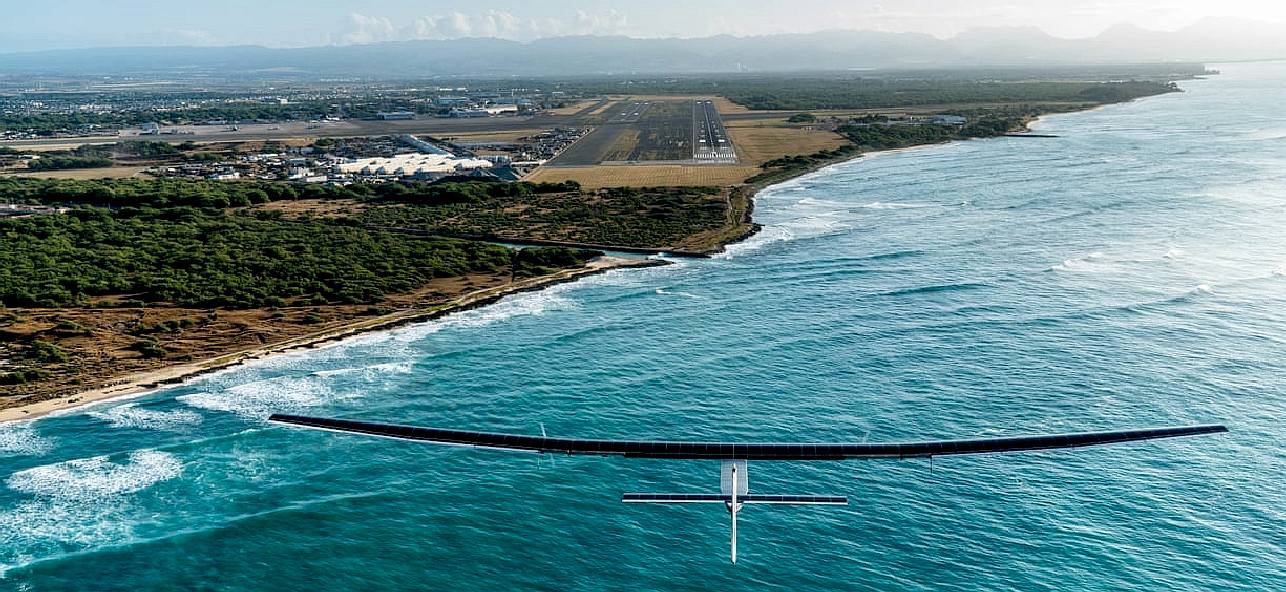
SOLAR
IMPULSE JULY 2016 - The Solar Impulse 2 completed a
multi-stop circumnavigation after 15 years in the planning,
development and finally, the record attempt.
Solar Impulse is a
Swiss long-range experimental solar-powered aircraft project, and also the name of the project's two operational aircraft. The privately financed project is led by Swiss engineer and businessman André Borschberg and Swiss psychiatrist and balloonist Bertrand Piccard, who co-piloted
Breitling Orbiter 3, the first
balloon to circle the world non-stop. The Solar Impulse project's goals were to make the first circumnavigation of the
Earth by a piloted fixed-wing
aircraft using only solar power and to bring attention to clean technologies.
The aircraft is a single-seated monoplane powered by photovoltaic
cells; they are capable of taking off under their own power. The prototype, often referred to as Solar Impulse 1, was designed to remain airborne up to 36 hours. It conducted its first test flight in December 2009. In July 2010, it flew an entire diurnal solar cycle, including nearly nine hours of night flying, in a 26-hour flight. Piccard and Borschberg completed successful solar-powered flights from
Switzerland to
Spain and then Morocco in 2012, and conducted a multi-stage flight across the
US in 2013.
A second aircraft, completed in 2014 and named Solar Impulse 2,
carried more solar cells and more powerful motors, among other improvements. On 9 March 2015, Piccard and Borschberg began to circumnavigate the globe with Solar Impulse 2, departing from Abu Dhabi in the
United Arab
Emirates. The aircraft was scheduled to return to Abu Dhabi in August 2015 after a multi-stage journey around the world. By June 2015, the plane had traversed Asia, and in July 2015, it completed the longest leg of its journey, from
Japan to
Hawaii. During that leg, the aircraft's
batteries sustained thermal damage that took months to repair. Solar Impulse 2 resumed the circumnavigation in April 2016, when it flew to
California. It continued across the US until it reached New York City in June 2016. Later that month, the aircraft crossed the
Atlantic Ocean to Spain. It stopped in
Egypt before returning to Abu Dhabi on 26 July 2016, more than 16 months after it had left, completing the approximately 42,000-kilometre (26,000-mile) first
circumnavigation of the
Earth by a piloted fixed-wing aircraft using only solar power.
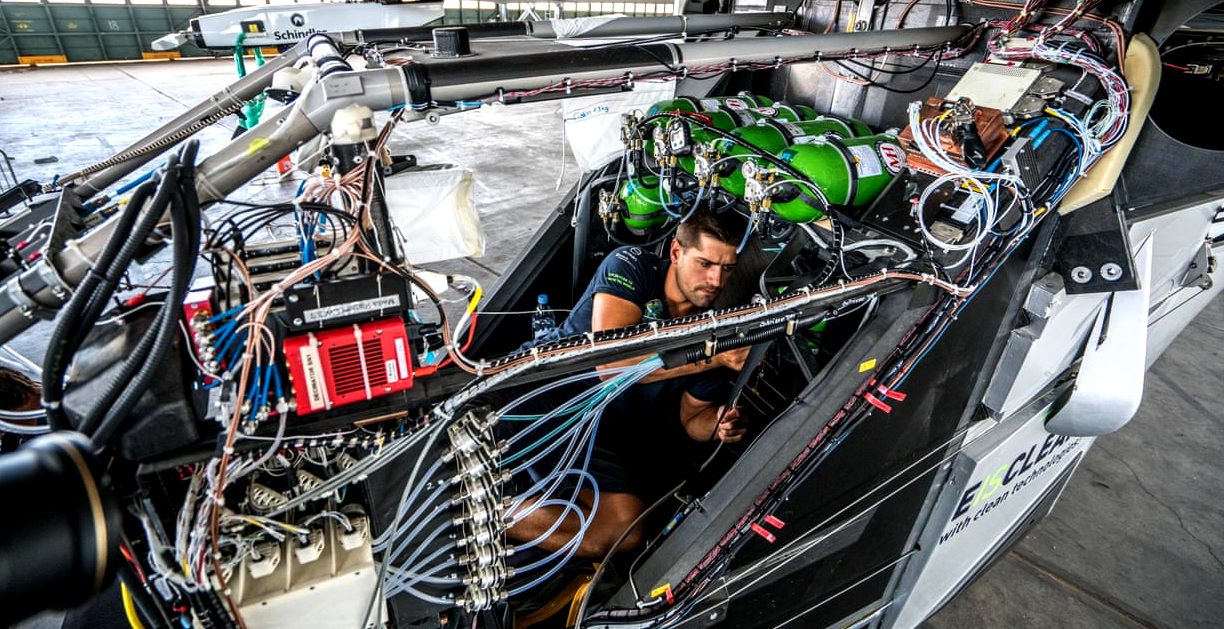
THE GUARDIAN
26 JULY 2016
Solar Impulse 2 has completed the first round-the-world flight by a solar-powered aeroplane, after touching down in Abu Dhabi early on Tuesday.
The final leg of the feat, aimed at showcasing the potential of renewable energy, was a bumpy one, with turbulence driven by hot desert air leaving the solo pilot, Bertrand Piccard, fighting with the controls.
The plane, which has a wingspan wider than a Boeing 747 and carries more than 17,000 solar cells on its wings, began the circumnavigation in March 2015 in Abu Dhabi. It has since crossed both the Pacific and
Atlantic Oceans using no
fossil fuel and has spent more than 23 days in the air.
Speaking to the Guardian from the cockpit shortly before landing, Piccard said he was feeling emotional as he neared the end of the journey: “It is a very, very special moment – it has been 15 years that I am working on this goal.
“I hope people will understand that it is not just a first in the history of aviation, but also a first in the history of energy,” he said.
“All the clean technologies we use, they can be used everywhere. So we have flown 40,000km, but now it is up to other people to take it further. It is up to every person in a house to take it further, every head of state, every mayor in a city, every entrepreneur or CEO of a company.
“These technologies now can make the world much better and we have to use them, not only for the environment, but also because they are profitable and create jobs.”
During daylight, the solar panels charged the plane’s batteries, which make up a quarter of the craft’s 2.3 tonne weight. The pilot also climbed to 29,000 feet during the day and glided down to 5,000 feet at night, to conserve power. The plane flies at about 30mph, although it can go faster if the sun is bright.
The plane could fly almost perpetually but the pilots cannot, due to the gruelling conditions aboard.
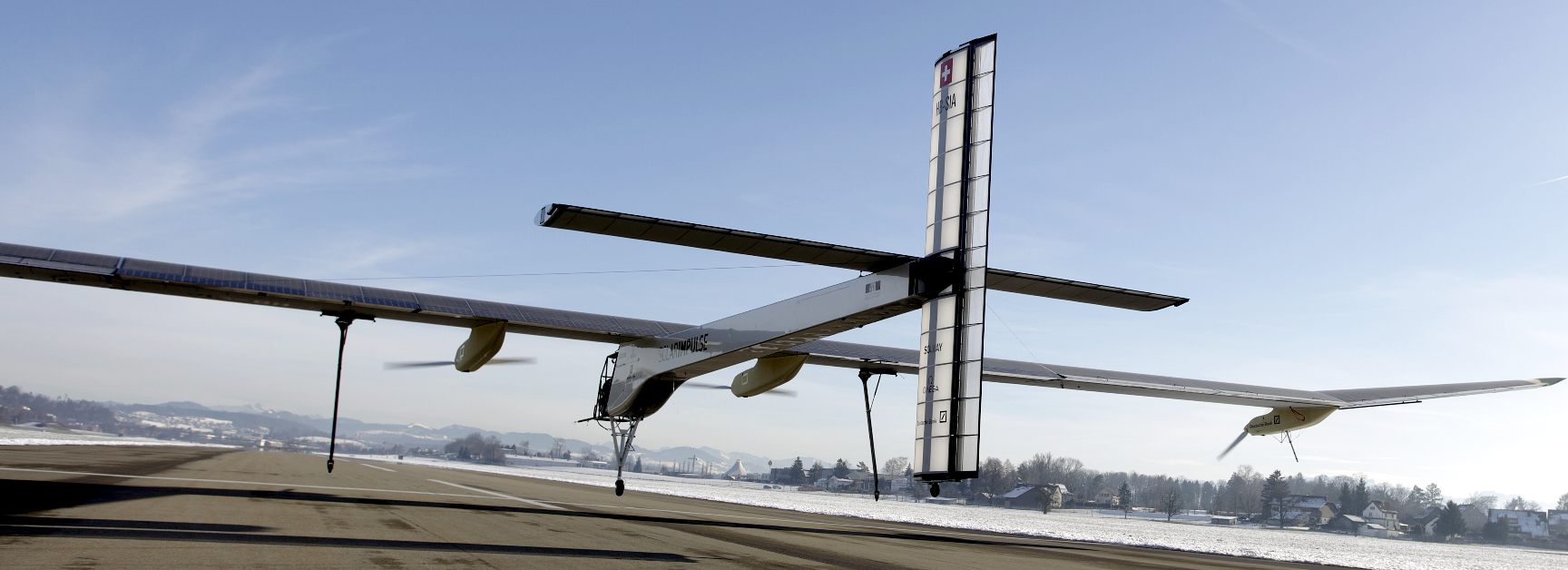
Bertrand alternated with André Borschberg to fly the 16 legs of the journey, spending up to five days in the unheated and unpressurised cabin, taking only short naps and with the single seat doubling up as a toilet. Borschberg flew the longest leg, 4,000 miles over the
Pacific from Japan to Hawaii, smashing the record for the longest uninterrupted journey in aviation history.
But Bertrand said his biggest challenge was getting his pilot’s licence in the first place: “The challenge was to come from the world of ballooning and hang gliding to the world of aeroplanes and instruments and procedures. When I initiated the project, I had no aeroplane licence so I had to work for it over six years. I did hundreds of hours to be allowed to fly a prototype aeroplane.”
Piccard and Borschberg, both Swiss, are seasoned adventurers. Piccard made the first non-stop balloon flight around the world in 1999, while Borschberg, a former Swiss Air Force fighter pilot, has had brushes with death involving an avalanche and a helicopter crash.
Bertrand said the final leg from Cairo to Abu Dhabi was particularly tough, because of having to fly at high altitude to avoid the worst of the turbulence. “It is a much more demanding and exhausting flight,” he said. “It is so turbulent, there were moments in the last night that I could not rest at all, I just had to fight with my flight controls.”
He said his ground team had made the record-breaking flight possible: “I am alone in the plane but all the people who have worked on this project are people who are completely devoted and committed to success. I will give to each of them a big hug, because they made my dream possible.”
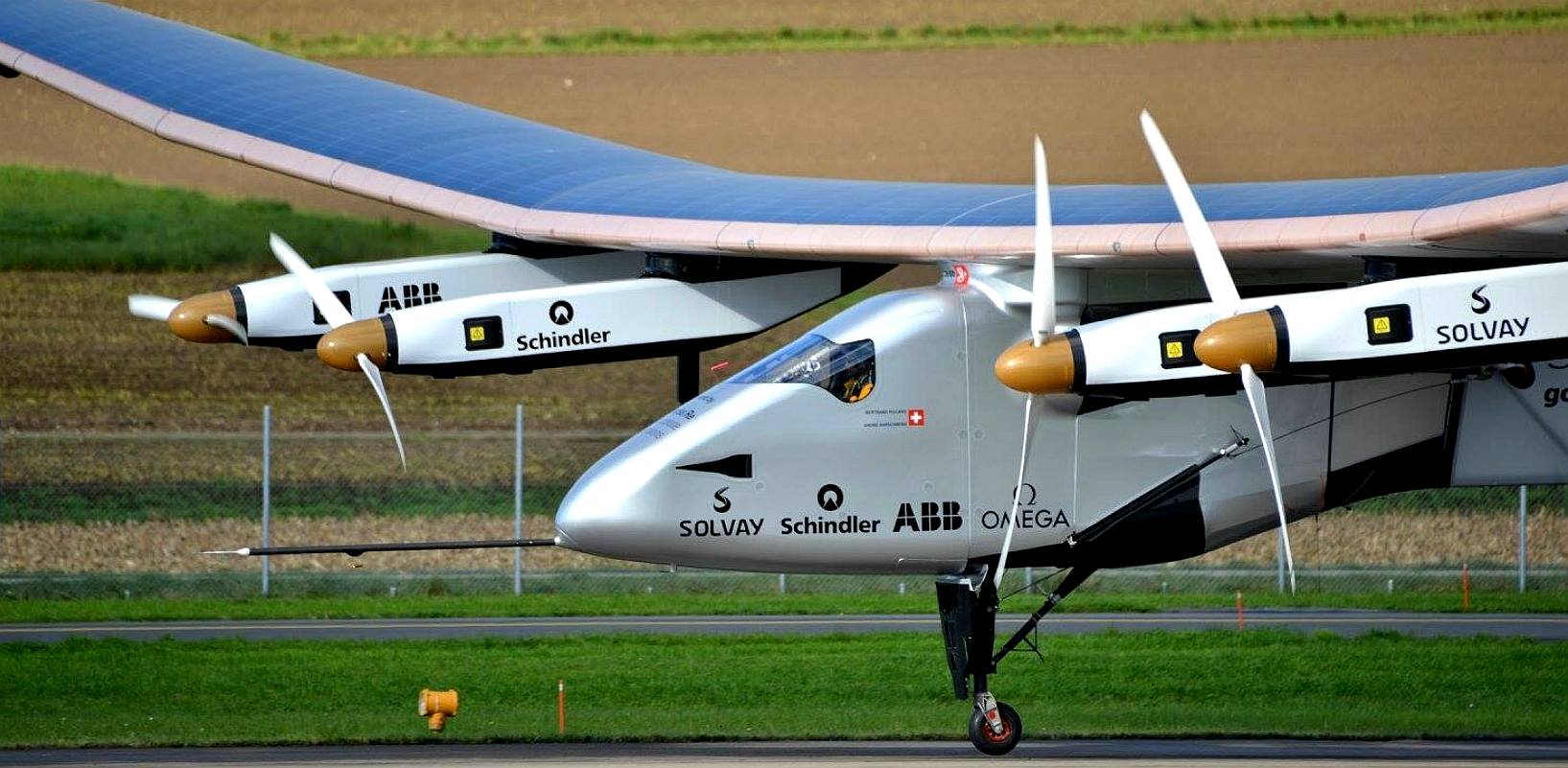
The aim of the Solar Impulse adventure was not to develop solar-powered planes for widespread use, but to show the capabilities of renewable energy.
“I worked for 15 years to have [this] demonstration of the improvements of these technologies, so now I really want to leverage this demonstration and create a world council for clean technologies,” Piccard said. “That will allow all these experts and specialists to advise the governments and big corporations on which types of technology to use to profitably fight climate change and profitably protect the environment.”
Ban Ki-moon, the UN secretary-general, said: “Solar Impulse has flown more than 40,000 kilometers without fuel, but with an inexhaustible supply of energy and inspiration. This is a historic day for Captain Piccard and the Solar Impulse team, but it is also a historic day for humanity.
“You may be ending your around the world flight today, but the journey to a more sustainable world is just beginning. The Solar Impulse team is helping to pilot us to that future.”
Solar Impulse’s journey has not been without difficulties. Crosswinds in China caused weeks of delays in 2015 and overheating batteries during the Pacific crossing forced it to spend the winter inside a Hawaiian hangar. The team also overcame financial troubles in 2015 after raising €20m from sponsors. By
Damian Carrington
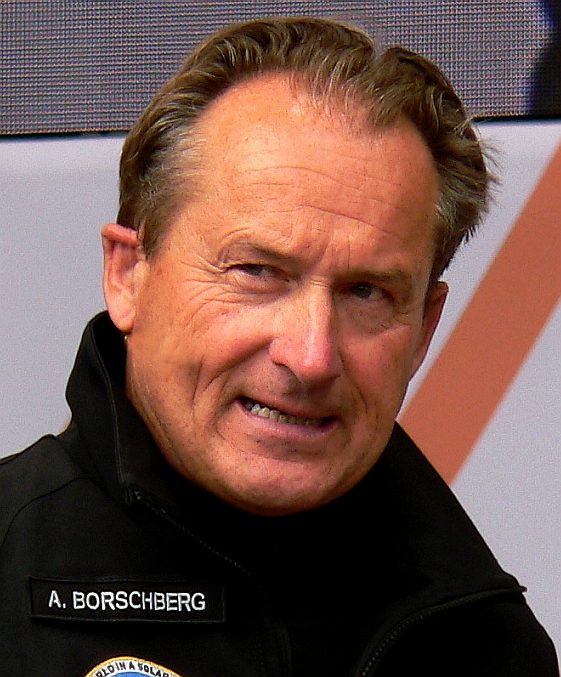
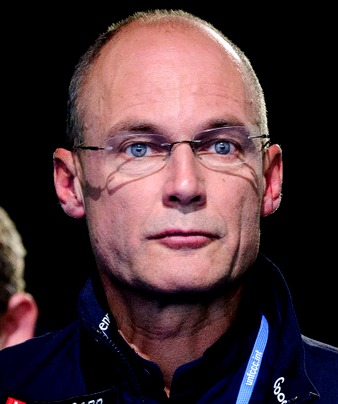
SOLAR
PILOTS - [Left] André Borschberg FRSGS (born December 13, 1952) is a Swiss entrepreneur, explorer, pilot and speaker. He is the co-founder of the Solar Impulse project, the first ever round-the-world solar flight, successfully completed in July 2016. During the Japan-to-Hawaii leg, André broke the world record for longest solo flight in an airplane of any kind: 117 hours and 52 minutes, breaking
Steve
Fossett's 2006 record. Before that, on 7 July 2010, André completed the first 24-hour solar powered flight. The flight set records for the longest manned solar-powered flight and the greatest height reached by a manned solar aircraft.
[Rights] Bertrand Piccard FRSGS (born 1 March 1958) is a Swiss psychiatrist and balloonist. Along with Brian Jones, he was the first to complete a non-stop balloon flight around the globe, in a balloon named
Breitling Orbiter 3. He was the initiator, chairman, and co-pilot, with André Borschberg, of Solar Impulse, the first successful round-the-world solar powered flight. Piccard was born in Lausanne (Switzerland). His grandfather Auguste Piccard was a balloonist and his father Jacques Piccard was an undersea explorer.
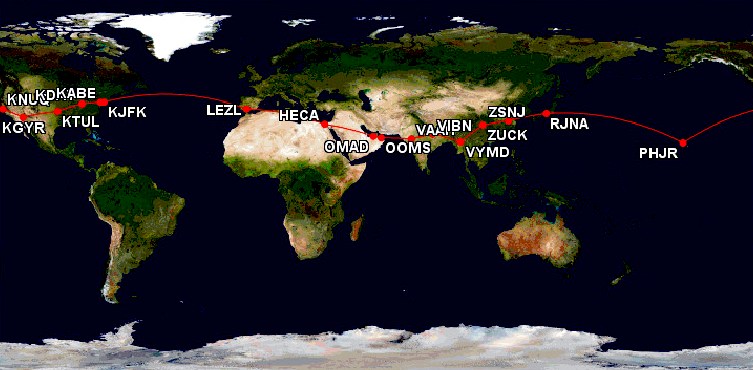
The Solar Impulse project aimed to demonstrate the capability and potential of clean technologies.
The Solar team included pilot André Borschberg and Bertrand Piccard
who piloted the aircraft across the
Atlantic
Ocean, arriving in Seville, Spain, on 23 June. The aircraft next stopped in Cairo,
Egypt, on 13 July, and landed in Abu Dhabi on 26 July, completing the around-the-world trip in a total of 17 stages and 16-1/2 months; it was the first circumnavigation of the
Earth by a piloted fixed-wing aircraft using only solar
power at a reported cost of $170 million
dollars.
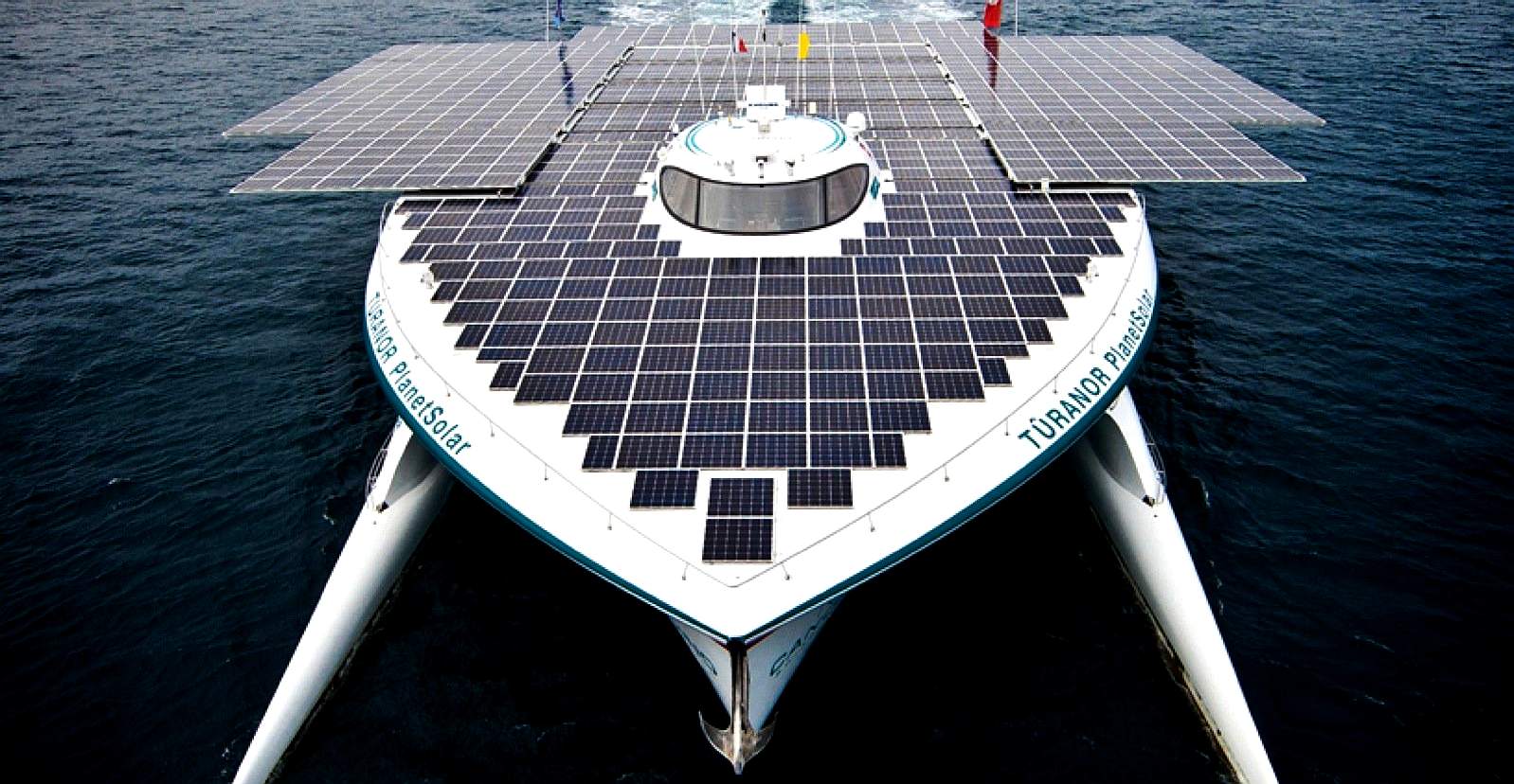
On the 4th of May 2012, history was made, as
Raphael
Domjan, at the helm of a giant of a catamaran powered only by solar panels crossed the finishing line at
Monaco to become the first electric boat to sail around the world. MS Tûranor
PlanetSolar, known under the project name
PlanetSolar, was (@ 2018) the largest solar-powered boat in the world. The vessel was launched on the 31st March
2010, also going into the Guinness
Book of World Records. The project was mostly financed by Immo
Stroeher, the owner of the boat.
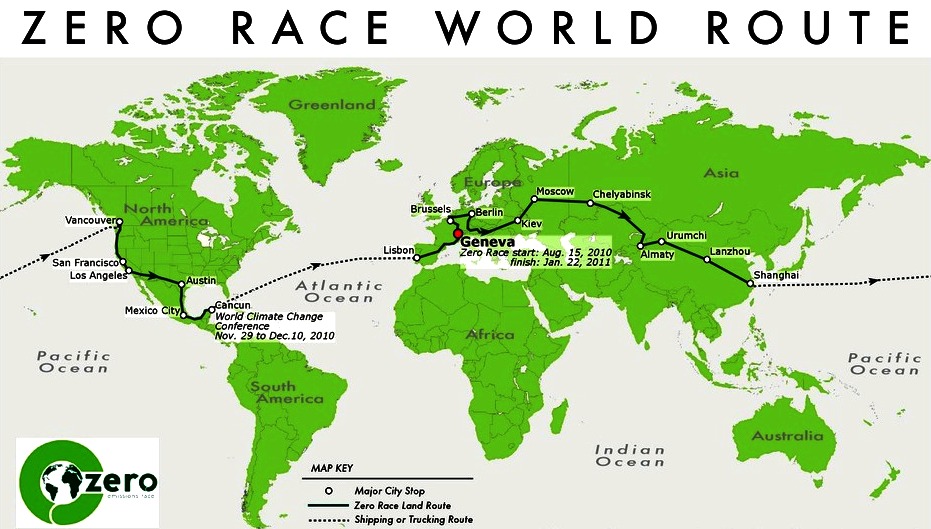
ZERO
- Green cars raced around the world in 2010. Starting from the Swiss capital city Geneva, the teams will cover 30,000 kilometers (18,650 miles) on their circumnavigation of the planet, arriving back in Geneva 80 days later. All the vehicles are powered by electricity generated from renewable energy sources, and competitors are expected to achieve up to 500km (186 miles) per day at an average speed of 80km/h (50 miles per hour). Recharging will be done over a four hour lunch break. The
organizers said that the Zero Race is all about sustainable mobility and transport, but the main aim of the race is to "generate enthusiasm for vehicles powered by renewable and sustainable energy".
Bertrand Piccard initiated the Solar Impulse project in November 2003 after undertaking a feasibility study in partnership with the École Polytechnique Fédérale de Lausanne. As a mechanical engineer, co-founder André Borschberg directed the construction of each aircraft and oversees the preparation of the flight missions. By 2009, they had assembled a multi-disciplinary team of 50 engineers and technical specialists from six countries, assisted by about 100 outside advisers and 80 technological partners.
The project is financed by a number of private companies and individuals, as well as receiving around CHF 6 million (US$6.4 million) in funding from the
Swiss government. The project's private financial backers include Omega SA, Solvay, Schindler, ABB and Peter Diamandis. The EPFL, the
European Space Agency and Dassault have provided technical expertise, while SunPower provided the aircraft's photovoltaic cells.
Piccard stated that the entire project from its beginnings in 2003 until mid-2015 had cost
€150
million. It raised another €20 million in late 2015 to continue the round-the-world flight.
TIME LINE
2003: Feasibility study at the École Polytechnique Fédérale de Lausanne
2004–2005: Development of the concept
2006: Simulation of long-haul flights
2006–09: Construction of first prototype (HB-SIA; Solar Impulse 1)
2009: First flight of Solar Impulse 1
2009–11: Manned test flights
2011–12: Further test flights through Europe and North Africa
2011–13: Construction of second prototype (HB-SIB; Solar Impulse 2)
2013: Continental flight across the US by Solar Impulse 1
2014: First flight of Solar Impulse 2
2015–2016: Circumnavigation of the Earth by Solar Impulse 2, conducted in seventeen stages over 16-1/2 months
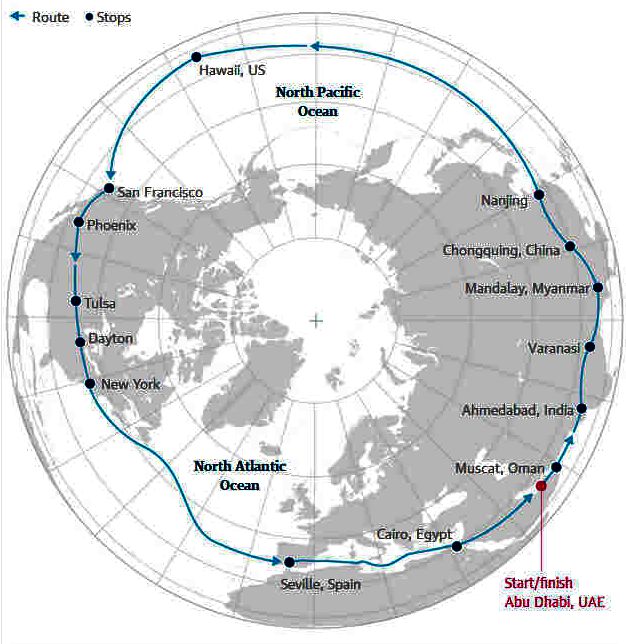
SOLAR IMPULSE 1 - HB-SIA
The first Solar Impulse aircraft, registered as HB-SIA, was primarily designed as a demonstration aircraft. It has a non-pressurized cockpit and a single wing with a wingspan similar to that of the Airbus A340 airliner. Under the wing are four nacelles, each with a set of lithium polymer
batteries, a 10 hp (7.5 kW) electric motor and one twin-bladed propeller. To keep the wing as light as possible, a customised carbon fibre honeycomb sandwich structure was used. 11,628 photovoltaic cells on the upper wing surface and the horizontal stabilizer generate
electricity during the day to power the
electric motors and to charge the
batteries allowing flight at night, theoretically enabling the single-seat plane to stay in the
air indefinitely.
The aircraft's major design constraint is the capacity of the lithium polymer batteries. Over an optimum 24-hour cycle, the motors can deliver a combined average of about 8 hp (6 kW), roughly the power used by the
Wright
brothers' Flyer, the first successful powered aircraft, in 1903. In addition to the charge stored in its batteries, the aircraft uses the potential
energy of height gained during the day to power its night flights.
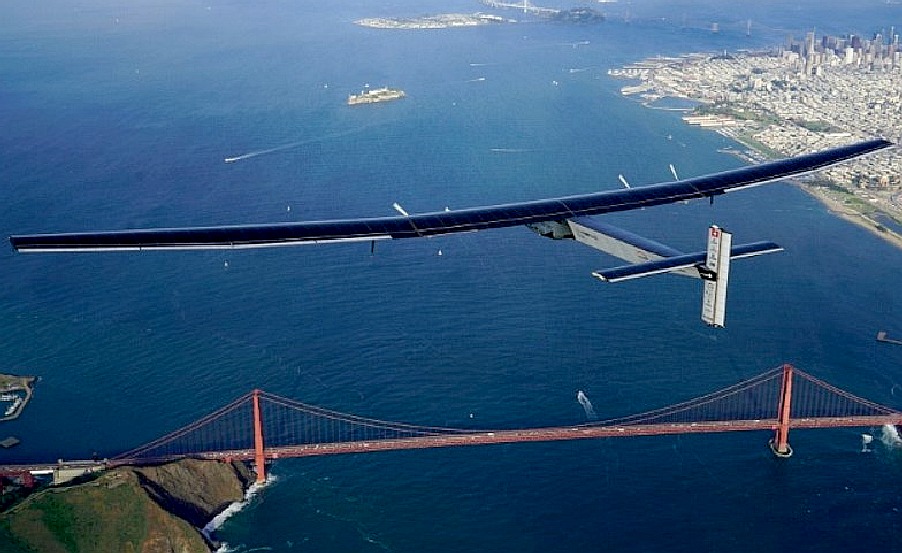
SOLAR
IMPULSE 2 JULY 2016 - The Solar Impulse 2 is a solar cell powered aeroplane that has 17,000 photovoltaic cells on the top surface of the wings.
Solar Impulse 2 began the circumnavigation in March 2015 in Abu Dhabi before flying over Oman,
India, Myanmar,
China and
Japan, from where it made a 8,924km journey to Hawaii.
SPECIFICATIONS
- Data from Solar Impulse Project and Diaz - General characteristics
Crew: 1
Length: 21.85 m (71.7 ft)
Wingspan: 63.4 m (208 ft)
Height: 6.40 m (21.0 ft)
Wing area: 11,628 photovoltaic cells rated at 45 kW peak: 200 m2 (2,200 sq ft)
Aspect ratio: 19.7
Loaded weight: 1,600 kg (3,500 lb)
Max. takeoff weight: 2,000 kg (4,400 lb)
Take-off speed: 35 kilometres per hour (22 mph)
Powerplant: 4 × electric motors, 4 x 21 kWh lithium-ion batteries (450 kg (990 lb)), providing 7.5 kW (10 HP) each
Propeller diameter: 3.5 m at 200 to 400 rpm (11 ft)
PERFORMANCE
Cruise speed: 70 kilometres per hour (43 mph)
Endurance: approximately 36 hours
Service ceiling: 8,500 m (27,900 ft) with a maximum altitude of 12,000 metres (39,000 ft)
SOLAR IMPULSE
2 - HN-SIB
Construction started in 2011 on the second aircraft, known as Solar Impulse 2, which carries the Swiss registration HB-SIB. Completion was initially planned for 2013, with a 25-day circumnavigation of the globe planned for 2014. A structural failure occurred on the aircraft's main spar during static tests in July 2012, leading to delays in the flight testing schedule to allow repairs. Solar Impulse 2's first flight took place at Payerne Air Base on 2 June 2014.
DESIGN
The wingspan of Solar Impulse 2 is 71.9 m (236 ft), slightly less than that of an Airbus A380, the world's largest passenger airliner, but compared with the 500-ton
A380, the carbon-fibre Solar Impulse weighs only about 2.3 tonnes (5,100 lb), little more than an average SUV. It features a non-pressurized cockpit 3.8 cubic metres (130 cu ft) in size and advanced avionics, including an autopilot to allow for multi-day transcontinental and trans-oceanic flights. Supplemental
oxygen and various other environmental support systems allow the pilot to cruise up to an altitude of 12,000 metres (39,000 ft).
SPECIFICATIONS - Data from Solar Impulse Project
- General characteristics
Crew: 1
Length: 22.4 m (73.5 ft)
Wingspan: 71.9 m (236 ft)
Height: 6.37 m (20.9 ft)
Wing area: 17,248 photovoltaic solar cells cover top of wings, fuselage
& tailplane total area of 269.5 m2 (2,901 sq ft) (rated at 66 kW peak)
Take-off speed: 36 km/h (22.4 mph)
Powerplant: 4 × electric motors, 4 x 41 kWh lithium-ion batteries (633 kg (1,396 lb)), providing 13 kW (17.4 hp) each
Propeller diameter: 4 m (13.1 ft)
PERFORMANCE
Maximum speed: 140 km/h (87 mph)
Cruise speed: 90 km/h (56 mph) 60 km/h (37 mph) at night to save power
Service ceiling: 8,500 m (27,900 ft) with a maximum altitude of 12,000 metres (39,000 ft)
|
1
|
9
March 2015 03:12
|
Abu
Dhabi, UAE
|
Muscat,
Oman
|
13 hrs 1 min
|
417 nmi
(772 km)
|
32.0 kn
(59.2 km/h)
|
Borschberg
|
|
2
|
10
March 02:35
|
Muscat,
Oman
|
Ahmedabad,
India
|
15 hrs 20 mins
|
860 nmi
(1,593 km)[95]
|
56.1 kn
(103.9 km/h)
|
Piccard
|
|
3
|
18
March 01:48
|
Ahmedabad,
India
|
Varanasi,
India
|
13 hrs 15 mins
|
630 nmi
(1,170 km)
|
47.7 kn
(88.3 km/h)
|
Borschber
|
|
4
|
18
March 23:52
|
Varanasi,
India
|
Mandalay,
Myanmar
|
13 hrs 29 mins
|
829 nmi
(1,536 km)
|
61.5 kn
(113.9 km/h)
|
Piccard
|
|
5
|
29
March 21:06
|
Mandalay,
Myanmar
|
Chongqing,
China
|
20 hrs 29 mins
|
883 nmi
(1,636 km)
|
43.1 kn
(79.9 km/h)
|
Piccard
|
|
6
|
20
April 22:06
|
Chongqing,
China
|
Nanjing,
China
|
17 hrs 22 mins
|
747 nmi
(1,384 km)
|
43.0 kn
(79.7 km/h)
|
Piccard
|
|
7
|
30
May 18:39
|
Nanjing,
China
|
Nagoya,
Japan
|
44 hrs 9 mins
|
1,589 nmi
(2,942 km)
|
36.0 kn
(66.6 km/h)
|
Borschberg
|
|
8
|
28
June 18:03
|
Nagoya,
Japan
|
Kalaeloa,
Hawaii
|
117 hrs 52 mins
|
4,819 nmi
(8,924 km)
|
40.9 kn
(75.7 km/h)
|
Borschberg
|
|
9
|
21
April 2016 16:15
|
Kalaeloa,
Hawaii
|
Mountain
View, CA
|
62 hrs 29 mins
|
2,206 nmi
(4,086 km)
|
35.3 kn
(65.4 km/h)
|
Piccard
|
|
10
|
2
May 12:03
|
Mountain
View CA
|
Phoenix,
AZ, US
|
15 hrs 52 mins
|
601 nmi
(1,113 km)
|
37.9 kn
(70.2 km/h)
|
Borschberg
|
|
11
|
12
May 11:05
|
Phoenix,
AZ, US
|
Tulsa,
OK, US
|
18 hrs 10 mins
|
850 nmi
(1,570 km)
|
46.7 kn
(86.4 km/h)
|
Piccard
|
|
12
|
21
May 09:22
|
Tulsa,
OK, US
|
Dayton,
OH, US
|
16 hrs 34 mins
|
647 nmi
(1,199 km)
|
39.1 kn
(72.4 km/h)
|
Borschberg
|
|
13
|
25
May 08:02
|
Dayton,
OH, US
|
Lehigh
Valley, PA, US
|
16 hrs 49 mins
|
564 nmi
(1,044 km)
|
33.6 kn
(62.2 km/h)
|
Piccard
|
|
14
|
11
June 03:18
|
Lehigh
Valley, PA, US
|
New
York, NY, US
|
4 hrs 41 mins
|
143 nmi
(265 km)
|
30.6 kn
(56.6 km/h)
|
Borschberg
|
|
15
|
20
June 06:30
|
New
York, NY, US
|
Seville,
Spain
|
71 hrs 8 mins
|
3,653 nmi
(6,765 km)
|
50.9 kn
(94.3 km/h)
|
Piccard
|
|
16
|
11
July 04:20
|
Seville,
Spain
|
Cairo,
Egypt
|
48 hrs 50 mins
|
2,022 nmi
(3,745 km)
|
41.4 kn
(76.7 km/h)
|
Borschberg
|
|
17
|
23
July 2016 23:28
|
Cairo,
Egypt
|
Abu
Dhabi, UAE
|
48 hrs 37 mins
|
1,455 nmi
(2,694 km)
|
29.9 kn
(55.4 km/h)
|
Piccard
|
|
Total
|
- |
- |
- |
558 hrs 7 mins
|
22,915 nmi
|
41.0 kn
|
- |
|
-
|
- |
- |
- |
(23.25
days)
|
(42,438 km)
|
(76.0 km/h)
|
- |
|
CIRCUMNAVIGATION OF THE EARTH 2015-2016
The aircraft was delivered to Masdar City in Abu Dhabi for the World Future Energy Summit in late January 2015, and it began the journey from Al Bateen Executive Airport on 9 March 2015. It was scheduled to return to the same location in August 2015. A mission control centre for the circumnavigation was established in Monaco, using satellite links to gather real-time flight telemetry and remain in constant contact with the aircraft and the support team.
The route followed by Solar Impulse 2 was entirely in the Northern Hemisphere. Twelve stops were originally planned along the route, with pilots Borschberg and Piccard alternating; at each stop, the crew awaited good weather conditions along the next leg of the route. For most of its time airborne, Solar Impulse 2 cruised at a ground speed of between 50 and 100 kilometres per hour (31 and 62 mph), usually at the slower end of that range at night to save power. Legs of the flight crossing the Pacific and Atlantic oceans were the longest stages of the circumnavigation, taking up to five days and nights. On multi-day flights, the pilots took 20-minute naps and used yoga or other exercises to promote blood flow and maintain alertness.
By the end of May 2015, the plane had traversed Asia. It made an unscheduled stop in Japan to await favourable weather over the Pacific, increasing the expected number of legs of the journey to 13. The aircraft began the flight from Japan to Hawaii on 28 June 2015 (29 June, Japan local time). With Borschberg in the cockpit, it reached Hawaii on 3 July, setting new records for the world's longest solar-powered flight both by time (117 hours, 52 minutes) and distance (7,212 km; 4,481 mi). The flight's duration was also a record for longest solo flight, by time, for any aircraft. During that leg the plane's batteries were damaged by overheating because they were packed in too much insulation. New parts had to be ordered, and as it was late in the season, with days shortening in the northern hemisphere, the plane was grounded in Hawaii. The US Department of Transportation stored the aircraft in a hangar at Kalaeloa Airport on Oahu.
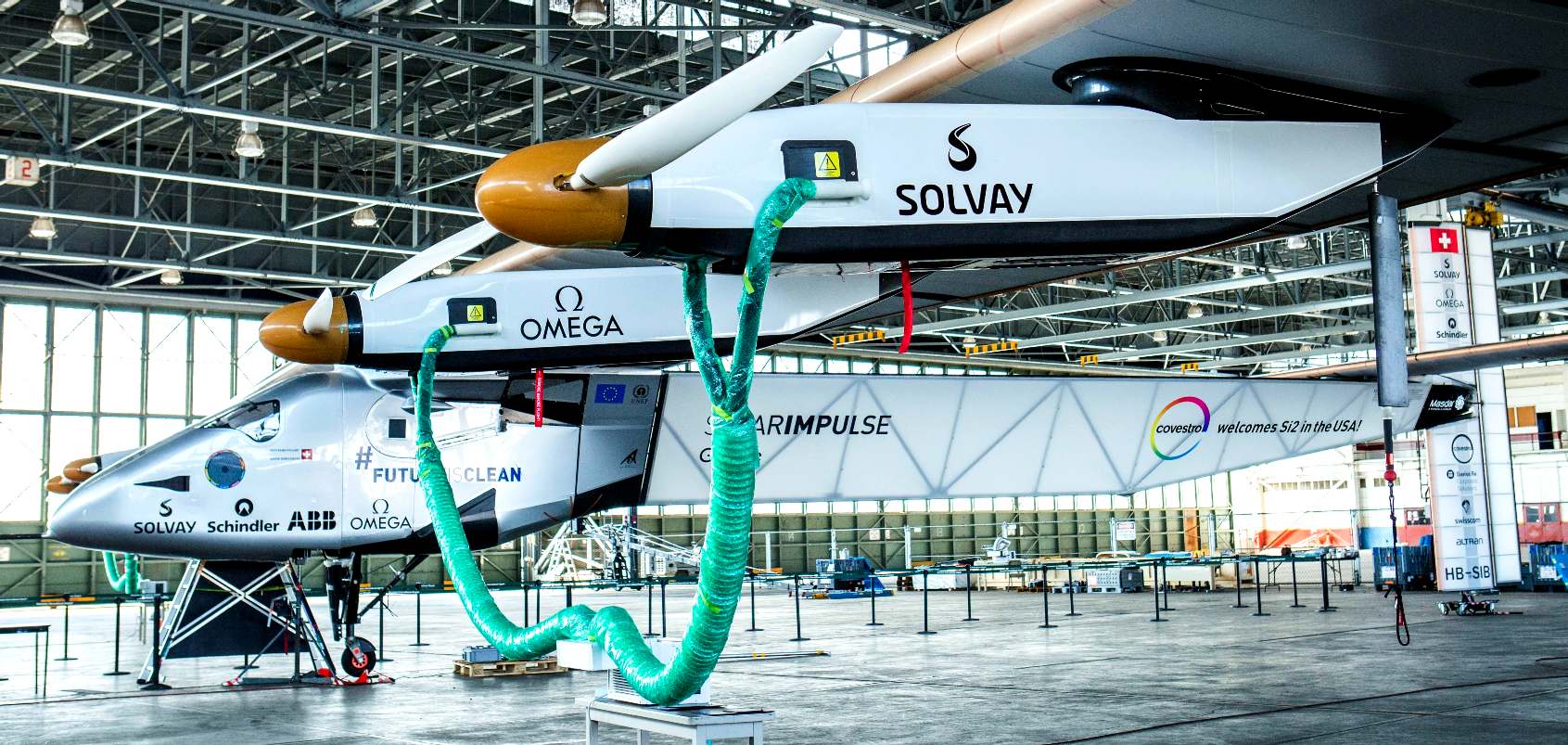
New batteries were made and installed in the plane. Test flights began in February 2016 to prepare for resumption of the circumnavigation once northern hemisphere days lengthened enough to permit multi-day solar-powered flights. A favourable weather window opened in April 2016, and the plane resumed its journey, landing at Moffett Field, in California, on 23 April. During that flight, Piccard, via a live videolink, spoke with Ban Ki-Moon and Doris Leuthard before the General Assembly of the
United
Nations, from the cockpit of Solar Impulse 2, commenting on that day's historic signing of the
Paris Agreement and discussing how using clean technologies can create jobs and fight
global
warming. Additional legs of the flight were added in the US as Solar Impulse 2 flew to Phoenix, Arizona, Tulsa, Oklahoma, Dayton, Ohio, Lehigh Valley, Pennsylvania and New York City, arriving there on 11 June 2016.
Piccard piloted the aircraft across the Atlantic Ocean, arriving in Seville, Spain, on 23 June. The aircraft next stopped in Cairo, Egypt, on 13 July, and landed in Abu Dhabi on 26 July, completing the around-the-world trip in a total of 17 stages and 16-1/2 months; it was the first circumnavigation of the Earth by a piloted fixed-wing aircraft using only solar power.
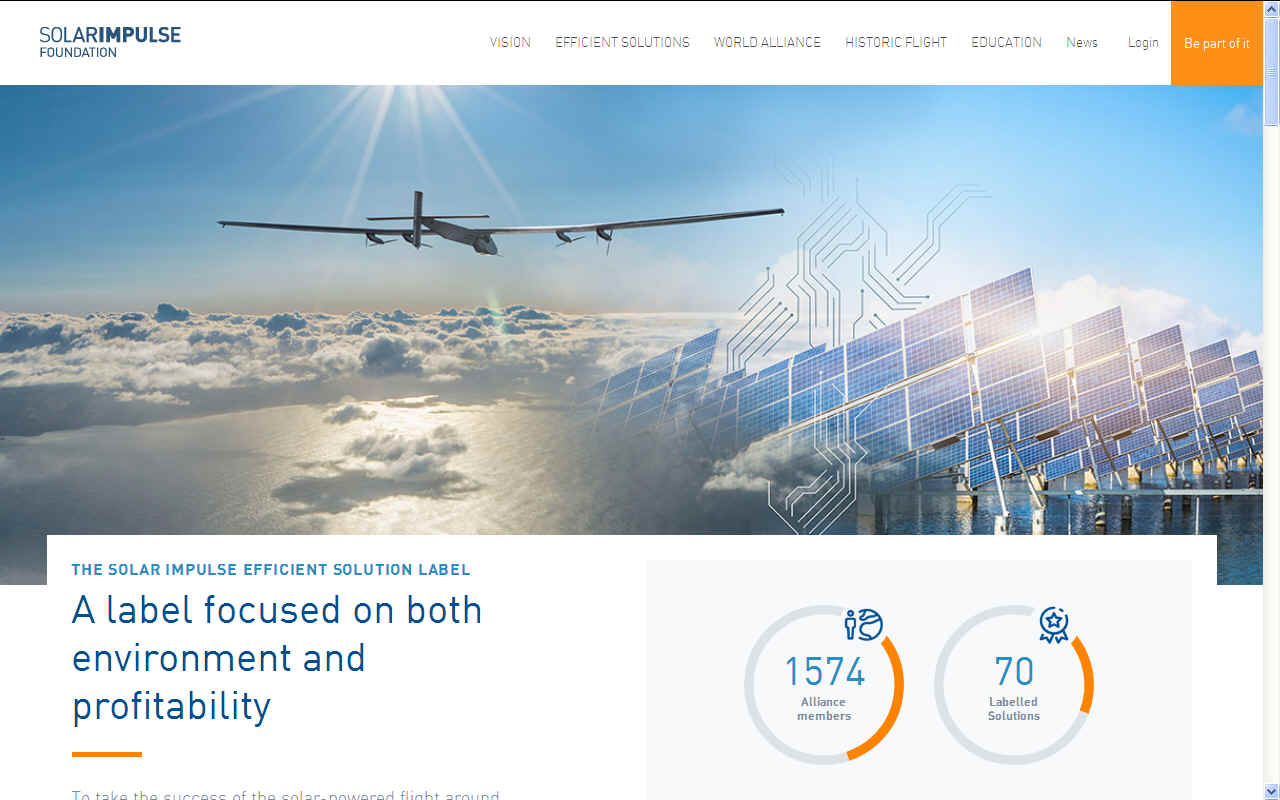
THE FUTURE
World Alliance for Clean Technologies
During the final flight before the completion of their circumnavigation of the globe, Borschberg and Piccard announced the creation of a World Alliance for Clean Technologies (later renamed World Alliance for Efficient Solutions). The aim of this non-governmental organisation is to promote green energy and sustainable technologies. World Alliance was launched in November 2017.
Future unmanned solar aircraft project
The Solar Impulse team plans to develop an unmanned solar-powered aircraft that can fly continuously at high altitudes to carry out some of the work currently performed by
satellites and that will also be able to "run applications" that cannot currently be performed by
satellites, in such fields as communication, measurements and observations for agriculture, infrastructure planning and other purposes. Borschberg predicted in 2016: "In three years we will have the first prototypes flying".
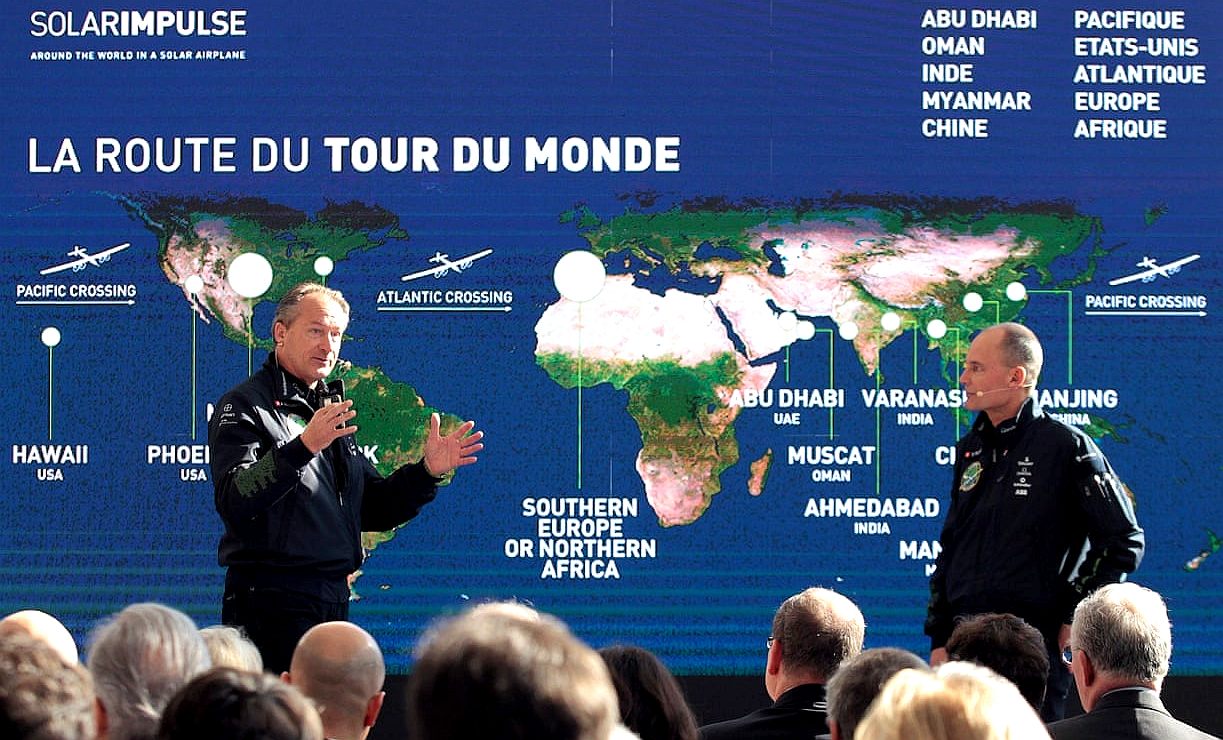
CONTACTS
SOLAR IMPULSE FOUNDATION
Ch. De Messidor 5
CH-1006 Lausanne
Switzerland
Email: fondation@solarimpulse.com
OFFICE OF THE CHAIRMAN
Initiator and Chairman
Dr. Bertrand Piccard
E-mail: secretariat@bertrandpiccard.com
www.bertrandpiccard.com
PRESS
Email: press@solarimpulse.com
Tel: international: +41 (0)79 642 94 32
TECHNICAL SUPPORT
Email: web@solarimpulse.com
FINANCE & ADMINISTRATION
Philippe Rathle
E-mail : philippe.rathle@solarimpulse.com
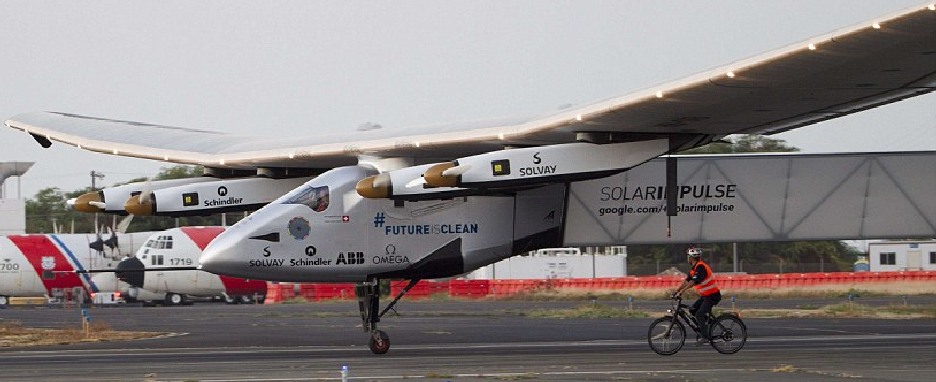
|
LEG
|
NAUTICAL
MILES
|
TIME
IN PORT
|
WAYPOINT
|
SUNSHINE
DAYS
|
|
- |
- |
- |
- |
- |
|
|
-
|
-
|
Monaco
|
0.00
|
|
1
|
784
|
2
|
Gibraltar
|
4.67
|
|
2
|
729
|
2
|
Tenerife,
Canary Islands
|
4.34
|
|
3
|
3,154
|
2
|
Trinidad,
Port of Spain
|
18.77
|
|
4
|
1,182
|
2
|
Panama
City
|
7.04
|
|
5
|
970
|
2
|
Galapagos
|
5.77
|
|
6
|
3,640
|
2
|
Tahiti
|
21.67
|
|
7
|
1,423
|
2
|
Tonga,
Nukualofa
|
8.47
|
|
8
|
410
|
2
|
Fiji,
Suva
|
2.44
|
|
9
|
1,886
|
2
|
Port
Moresby PNG
|
11.23
|
|
10
|
340
|
2
|
Thursday
Island, Cape York
|
2.02
|
|
11
|
724
|
2
|
Darwin
|
4.31
|
|
12
|
1,572
|
2
|
Jakarta,
Indonesia
|
9.36
|
|
13
|
1,881
|
2
|
Colombo,
Sri Lanka
|
11.20
|
|
14
|
2,109
|
2
|
Aden,
Yemen
|
12.55
|
|
15
|
698
|
2
|
Jeddah,
Saudi Arabia
|
4.15
|
|
16
|
670
|
2
|
Port
Said, Egypt
|
3.99
|
|
17
|
1,111
|
2
|
Palermo,
Sicily
|
6.61
|
|
18
|
170
|
2
|
Naples,
Italy
|
1.01
|
|
19
|
393
|
|
Monaco
|
2.34
|
|
- |
- |
- |
- |
- |
|
- |
23,846
|
36
|
RUNTIME
DAYS @ 7kts
|
141.94
|
|
- |
- |
- |
- |
- |
|
+
10% service
|
=
156.13 Days
|
- |
7
KNOTS AVE INC PORT & %
|
192.13
|
|
-&
maintenance |
- |
- |
AT
6 KNOTS AVE
|
224.16
|
|
-
|
-
|
- |
AT
5 KNOTS AVE
|
268.99
|
MARINE
CIRCUMNAVIGATION - The
above table illustrates one of the most likely ocean awareness
expedition routes for the Elizabeth Swan solar and wind
powered boat, showing the time elapsed in days for 7 knots
average cruising speed, including times for 5 and 6 knot
averages - allowing for 10% downtime and 36 days in ports.
Hence, although the objective is to reduce the current solar
circumnavigation record from 584 days, the event in not an
outright non-stop yacht
competition in the offshore racing sense. It remains to be
seen how accurate such a prediction might be.
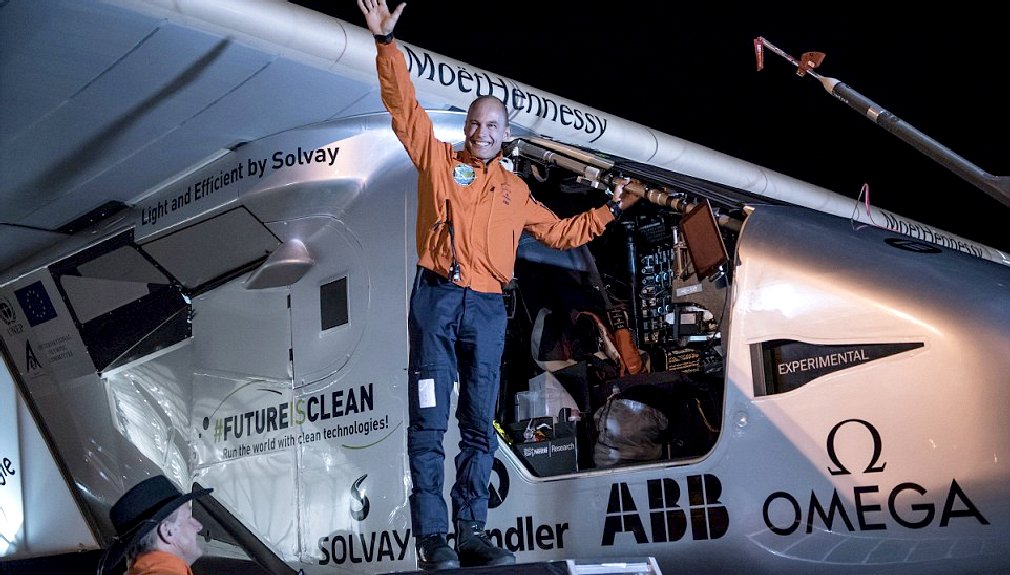
LINKS
& REFERENCE
https://www.theguardian.com/environment/2016/jul/26/solar-impulse-plane-makes-history-completing-round-the-world-trip
https://en.wikipedia.org/wiki/Solar_Impulse
https://solarimpulse.com/
http://www.climateaction.org/news/solar_impulse_plane_lands_in_oklahoma_after_11th_leg_of_round_the_world_att
This
website is provided on a free basis as a public information
service. Copyright © Cleaner
Oceans Foundation Ltd (COFL) (Company No: 4674774)
2019. Solar
Studios, BN271RF, United Kingdom.
COFL
is a charity without share capital.
|













